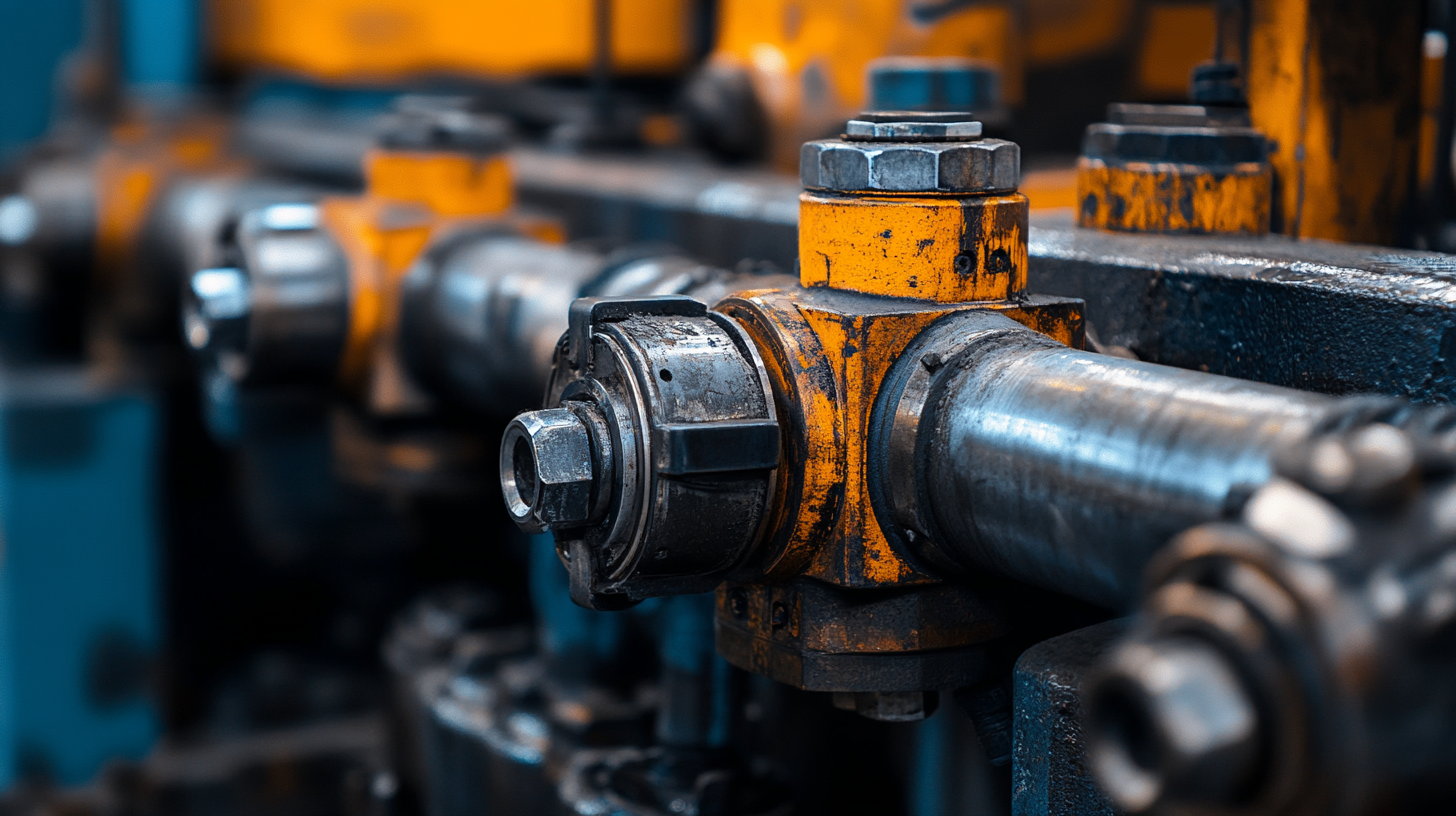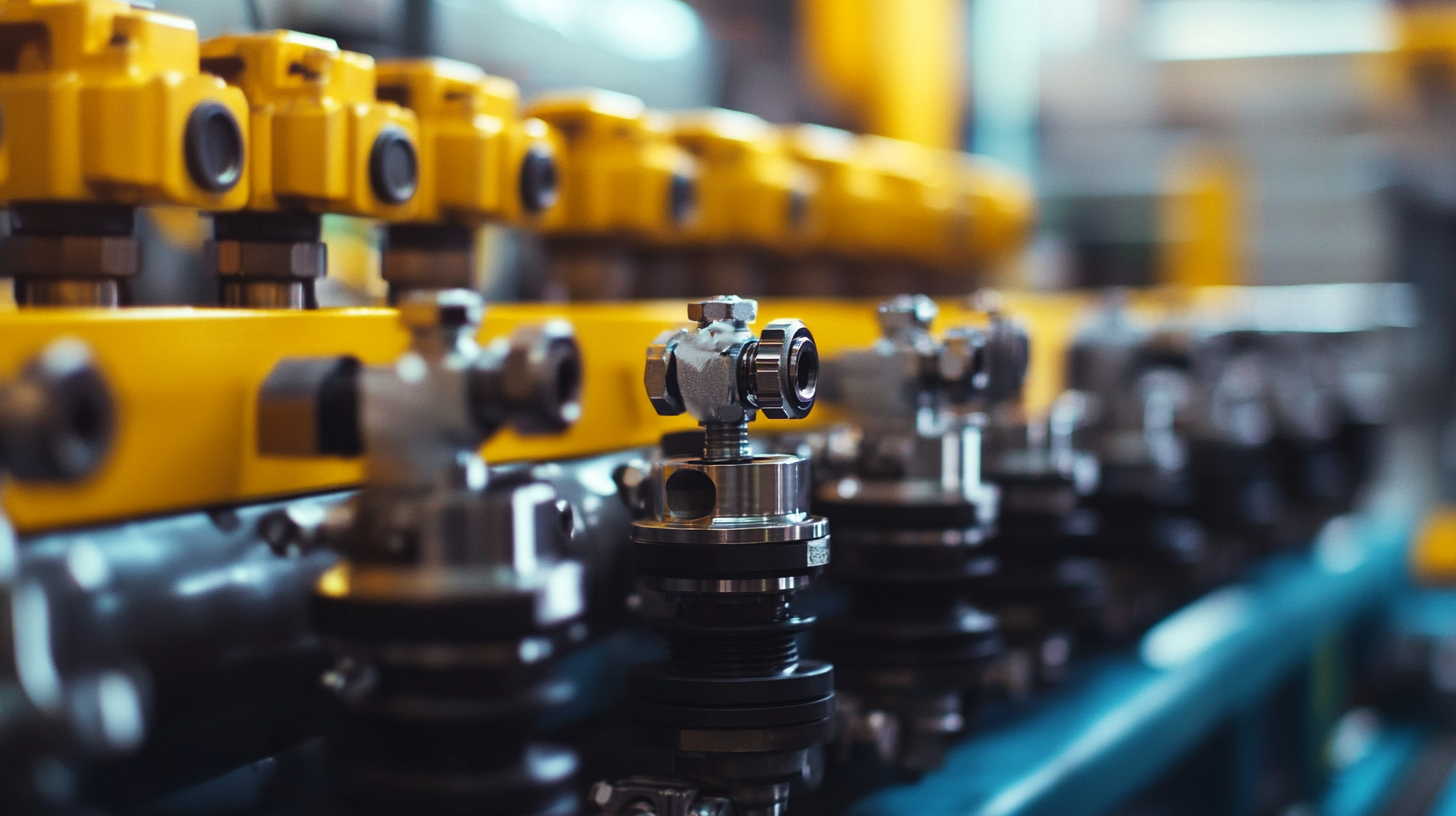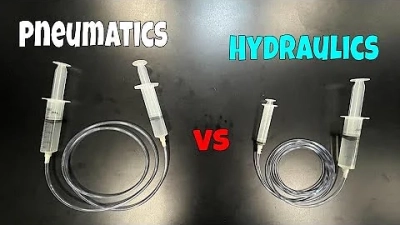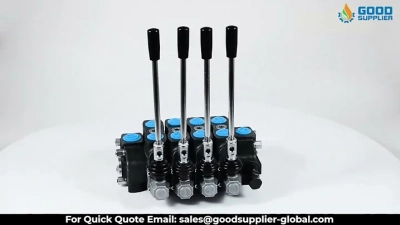Understanding Types of Hydraulic Valves and How to Choose the Right One for Your Needs
In the world of fluid power systems, hydraulic valves play a crucial role in controlling the flow and pressure of hydraulic fluids. These components are essential in various applications, from industrial machinery to mobile equipment, as they ensure that systems operate efficiently and safely. Understanding the different types of hydraulic valves and their specific functions can significantly enhance your decision-making processes when it comes to maintaining or upgrading hydraulic systems.
Choosing the right hydraulic valves for your needs requires careful consideration of several factors, including the system's application, the type of fluid being used, and the desired response characteristics. With a myriad of options available, from directional control valves to pressure relief valves, it is vital to comprehend the unique features and benefits each type offers. This blog aims to provide a comprehensive overview of hydraulic valves, helping you to make informed choices that align with your operational requirements and enhance the performance of your hydraulic systems.

Types of Hydraulic Valves: A Comprehensive Overview
When it comes to hydraulic valves, understanding the various types available is crucial for selecting the appropriate one to meet specific needs. Hydraulic valves play a fundamental role in controlling fluid flow and pressure in hydraulic systems, making them essential components across multiple industries, from manufacturing to aerospace.
One of the key classifications of hydraulic valves includes proportional valves, which adjust flow rates and pressure according to the input signal, allowing for precise control in dynamic applications. Electro-hydraulic servovalves are another significant type, known for their ability to provide high performance with rapid response times. These valves often utilize innovative designs that incorporate piezoelectric materials, enhancing their effectiveness in servo control systems.
Moreover, pilot relief valves (PRVs) are critical for managing excess pressure within hydraulic systems. Recent advancements have introduced hydraulic energy regeneration units (HERUs) that improve efficiency by capturing energy during pressure relief, thus adding another layer of complexity and functionality to valve selection. With the continuously evolving technology in hydraulic systems, understanding these various valve types and their unique capabilities ensures optimal performance and reliability in engineering applications.

Key Features and Functions of Different Hydraulic Valves
Hydraulic valves play a crucial role in controlling the flow and direction of hydraulic fluid within a system, and understanding their key features and functions is essential when selecting the right valve for your needs. One of the primary types of hydraulic valves is the directional control valve, which governs the path through which the hydraulic fluid flows. These valves are crucial in applications where the movement of hydraulic actuators needs to be precisely controlled, allowing for different operation modes such as forward, backward, or holding positions.
Another essential type is the pressure control valve, which ensures that the system pressure remains within designated limits. These valves can be categorized into relief valves, which prevent pressure spikes by discharging excess fluid, and reducing valves, which regulate output pressure to a desired level. By using pressure control valves, you can protect hydraulic components from damage while ensuring optimal system performance.
Flow control valves are also integral to hydraulic systems, as they regulate the flow rate of the fluid. These valves can be adjusted to vary the speed of actuators, allowing for smooth and precise operations. When selecting a flow control valve, factors such as the desired flow rate, leak rates, and response time are important to consider, as they directly impact the efficiency and effectiveness of your hydraulic system. Choosing the right hydraulic valve involves understanding these key features and their functions, ensuring a tailored solution for your specific application.
Factors to Consider When Choosing a Hydraulic Valve
When selecting a hydraulic valve, several critical factors need to be carefully evaluated to ensure optimal performance and reliability in your hydraulic system. Firstly, understanding the valve type is paramount. According to a report by the International Society of Automation, directional control valves account for over 30% of the hydraulic components in industrial applications, highlighting their importance in controlling the flow of hydraulic fluid. Whether you require a solenoid valve, a poppet valve, or a spool valve, each type offers specific advantages depending on the application.
Another vital consideration is the valve's pressure rating. A study from the Hydraulic Institute indicates that equipment failures often stem from improper pressure levels, where exceeding the valve's rated pressure can lead to catastrophic failures. It is crucial to match the valve's pressure specifications with your system's maximum operational pressure to prevent costly downtime due to equipment failure.
Additionally, flow rate and size are significant determinants for efficient hydraulic system performance. The Hydraulic Manufacturers Association states that matching the flow rate of the valve to the hydraulic circuit requirements can boost system efficiency by up to 15%. Therefore, selecting a valve that accommodates the necessary flow rate while fitting within the system dimensions can enhance both performance and longevity.
Lastly, factors such as material compatibility and environmental conditions should not be overlooked. For example, using valves made from corrosion-resistant materials in aggressive environments can greatly extend their service life. Incorporating these considerations into your selection process will help ensure that you choose a hydraulic valve that not only meets your current needs but is also adaptable for future requirements.

Common Applications for Various Hydraulic Valve Types
When considering the various types of hydraulic valves, it’s essential to understand their common applications to make an informed choice tailored to specific needs. Hydraulic valves play a crucial role in managing the flow and direction of hydraulic fluids across numerous industries, from construction to manufacturing. For instance, proportional valves have gained popularity due to their compact size, lightweight design, and rapid response times. These attributes make them ideal for applications requiring precise flow control, such as in advanced electrohydraulic systems where joystick inputs facilitate seamless operation.
Another important category is the subsurface safety valves (SSVs), which are vital in oil well completions. They ensure safe operations by preventing uncontrolled fluid flow, which is critical during adverse situations. The reliability of SSVs highlights their importance within the energy sector, especially in maintaining the integrity of wellhead equipment under perilous conditions.
As the hydraulic valve market continues to evolve, automated options are becoming the norm. The selection of the right valve type—along with proper sizing and actuator considerations—can significantly enhance system efficiency. Automated valves are frequently utilized in process industries and offer advanced control capabilities, making them suitable for complex tasks such as regulating flow in supercritical carbon dioxide pipelines. Understanding the applications of each type of hydraulic valve is essential for optimal equipment performance and safety in varied operational environments.
Maintenance Tips for Ensuring Hydraulic Valve Performance
Hydraulic valves are critical components in various industrial applications, and ensuring their optimal performance requires regular maintenance. Timely maintenance of pipelines, valves, and hydraulic appurtenances is essential to prevent costly breakdowns and extend the lifespan of these systems. According to industry reports, an effective maintenance program can reduce repair costs by up to 30% while improving overall system efficiency.
One of the key practices in valve maintenance is the use of advanced sensor technologies for performance monitoring. These sensors can detect changes in pressure, flow rates, and temperature, providing real-time data that helps in identifying potential issues before they escalate. A recent study revealed that the incorporation of such technologies can enhance the preventive maintenance schedule by as much as 40%. However, these advancements also come with challenges, such as integration complexities and the need for skilled personnel to interpret the data accurately.
In addition to technological solutions, following best practices for routine maintenance is crucial. Utility companies must establish regular inspection schedules and take proactive measures, such as cleaning, lubrication, and timely replacement of worn components. Ensuring that hydraulic valves are free from leaks and corrosion can significantly enhance system reliability. Industry statistics indicate that regular maintenance not only improves hydraulic valve performance but also contributes to lower operational costs over time, making it a wise investment for any utility service provider.
Related Video

We have over 30 years of experience in designing complete hydraulic systems, repairs and distribution of fluid power equipment and parts.
FOLLOW US ON :
Contact Details
Address:
4020 SE 45th CT.
Ocala, FL 34480
Phone No:
Email:
sales@cunninghamfluidpower.com




